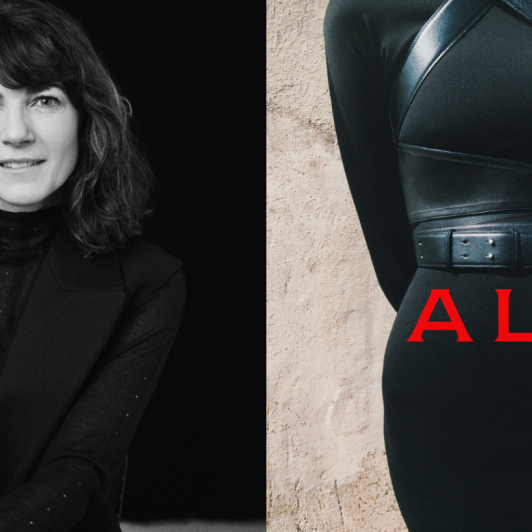In 1995, U.S. NASA astronaut Chris Hadfield, aboard the Space Shuttle Endeavour, was headed to the Russian Mir Space Station. Despite being equipped with professional tools to open the hatch, he found himself unable to do so upon arrival.
In a critical moment, Chris Hadfield used his essential kits Victorinox Swiss Army Knife to successfully gain entry into the space station.
Years later, he wrote in his memoir: “Never leave the planet without one.”
In an exclusive interview with Luxe.CO, Carl Elsener IV, CEO of The Victorinox Group, a member of the fourth generation of the founding family, proudly shared this story, saying, “We feel very proud that NASA to be best prepared for the worst has also chosen Victorinox Swiss army knife.”
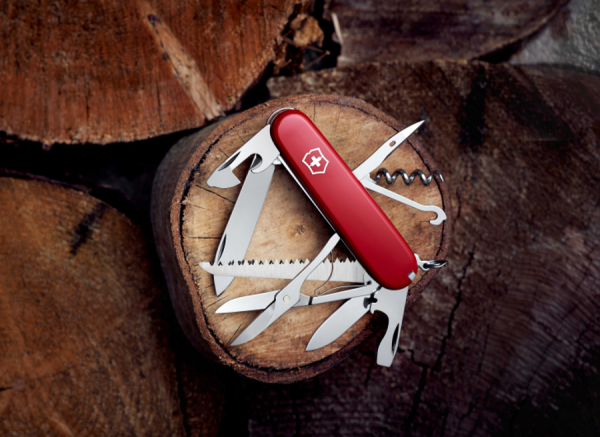
Today, the Swiss Army Knife has become synonymous with Victorinox globally, but in 1884, Victorinox was just a cutler’s workshop in Ibach, canton of Schwyz, at the heart of Switzerland.
How did Victorinox grow into a global company under the Elsener family’s leadership over the past 139 years?
Through in-depth conversations with Carl Elsener IV, the fourth-generation descendant and CEO of The Victorinox Group, and his wife Veronika Elsener, the group’s Chief Marketing Officer, it’s clear that the solid product strength is backed by four generations of the family’s efforts. Their unique family foundation model has safeguarded the enterprise’s legacy.

Under the leadership of the Elsener couple, while continuously focusing on product strength, they are also enhancing Victorinox’s brand power through multi-faceted brand communication and storytelling (see the full interview transcript at the end of the article).
Victorinox entered the Chinese mainland market in 1996. According to Carl Elsener IV, in 2022, Victorinox’s global sales amounted to 426 million Swiss Francs, with the Asia-Pacific region accounting for 13%, and the Chinese market contributing the most.
On this trip to China, the couple came to sign a license agreement for the Wenger brand under The Victorinox Group with the KUNCHI Group and visited the KUNCHI’s innovation center in Changshu, Suzhou.
Behind the “Little Red Knife” Is a Century of Consistent Innovation
A Victorinox “Little Red Knife” is equivalent to holding 15 tools in hand, capable of cutting fruits, opening bottles, sawing wood, and more, all in a compact design easily fitting into any pocket. This knife represents 139 years of wisdom and innovation by the Elsener family. As Veronika Elsener said, “I saw early on how family values were driving the business, and how the drive for innovation, quality, functionality and design have been at the core of the brand, this has always been something I enjoy.”
The story began in 1884 in Ibach, canton Schwyz of Switzerland.
That year, 24-year-old Karl Elsener, after apprenticeships in France and Germany, founded a knife cutler’s workshop in his hometown Ibach-Schwyz, hoping to create local jobs.

The knife cutler’s workshop Karl Elsener founded in 1884
In 1891, Karl Elsener manufactured the first batch of soldier’s knives for the Swiss Army, laying the foundation for his workshop in the multi-functional knife domain. He also established the Association of Swiss Master Cutlers, uniting various knife workshops to ensure the successful delivery of these soldier’s knives.
After delivering the first major supply to the Swiss Army, Karl Elsener had more time to think about improving the soldier’s knife, a design he was not satisfied with. In 1896, he added a spring mechanism to fix tools on both sides of the handle, adding a small knife and a corkscrew, thus enhancing its practicality and aesthetics. He patented this design as the original Swiss Officer’s and Sports Knife in the following year, known around the world today as the “Original Swiss Army Knife”.

In 1909, Karl Elsener named the brand “Victoria” in memoriam of his mother and registered the emblem with the cross and shield as a trademark.
In 1921, with stainless steel (Inox) becoming popular worldwide, Karl Elsener introduced it into knife manufacturing to extend their lifespan. He combined “Inox” and “Victoria,” forming today’s company and brand name – Victorinox.
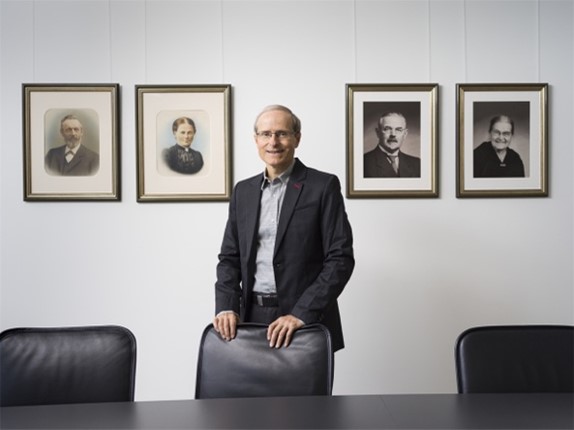
Carl Elsener IV photographed with his great-grandparents and grandparents
When Carl Elsener III took over, he expanded the product functionality, continuing his grandfather’s passion for knife innovation, and was inducted into the BLADE Magazine Cutlery Hall of Fame.

*Note: The “BLADE Magazine” Cutlery Hall of Fame is the highest honor on the planet for individuals who demonstrate exceptional contributions to the world of knives. Only 1-2 people are inducted annually during a ceremony at BLADE Show.
“For our family, there are also some values, and I think these values are very important for the culture at the secret of how we work together with all our teams. These are 7 values: openness, trust, respect, gratitude, modesty, courage and responsibility.” Carl Elsener IV told Luxe.CO.
Category Extension: “Design at the Service of Function”
“The Swiss Army knife has become a very successful product, but we have seen that our products are also copied. And we were concerned about the future. And we were thinking can win the long-term key to the production of The Little Red Knife in Switzerland and still be competitive. And our conclusion was to invest in our brand and in the visibility of our brand.” Carl Elsener IV recalled in the interview.
Expanding into new product categories became one of Victorinox’s core strategies at that time.
How did Victorinox decide which categories to expand into? The answer was straightforward and simple: conduct customer surveys.
“We did get the big list. But on the top of the list were products for traveling, for outdoor, and watches were mentioned.”

In 1989, Victorinox officially started its category expansion, market entry for “Watches” in North America with its former U.S. sales partner.
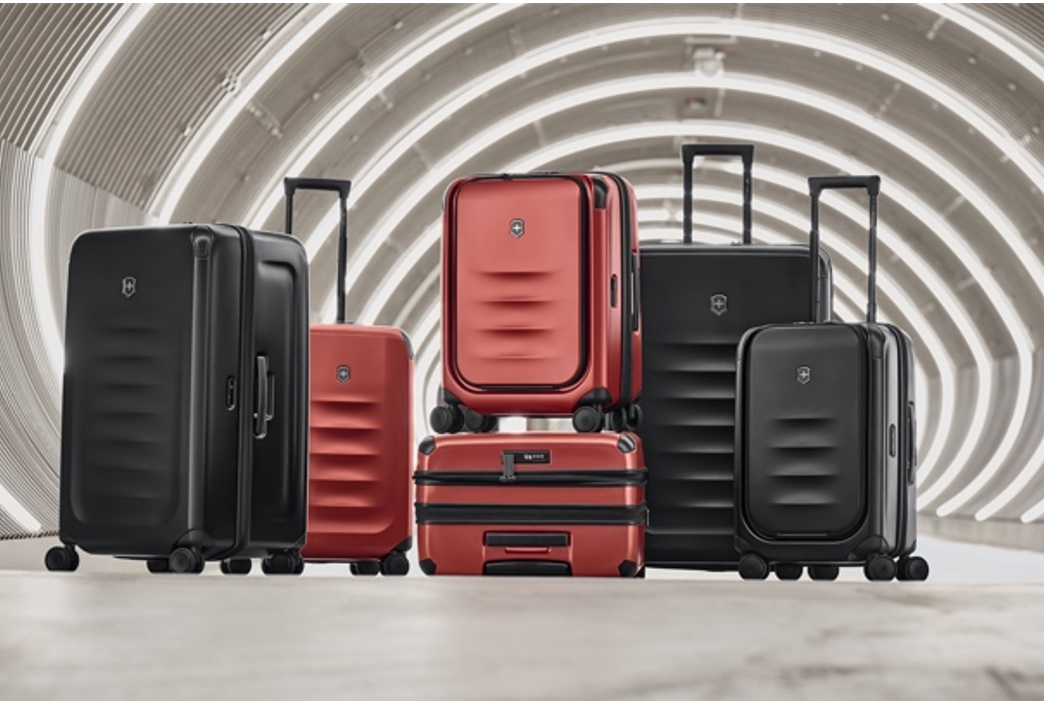
In 1999, Victorinox entered the “travel gear” field through a licensing agreement with the American TRG Group.
Veronika Elsener pointed out that the development and design of Victorinox products always revolve around the brand DNA, “All of our products are developed to ensure that our consumers are best prepared to master their life and time and design follows function to deliver this.”
The brand’s data shows the current core categories and their sales proportions: Swiss Army Knives (36%), household and professional knives (34%), travel gear (17%), watches (10%), and fragrances (3%).
As Victorinox’s footprint has spread across global markets, the popularity of different categories varies due to diverse consumer lifestyles.
“In China, the brand’s best-selling product is the Swiss army knife. The COVID pandemic has a big impact, ,and here in China, people enjoy glamping and cycling. And I think for glamping, cycling, traveling and every day carry the Swiss Army knife is really the right thing, that helps you to feel best prepared for whatever comes. In Europe, Swiss Army knives are high power. I think in Europe people are much more outdoors and do it themselves. We are used to repairing things ourselves, especially in Germany.
Customers’ needs in Hong Kong and Japan travel gear is very strong. In the United States household professional knives are the leading category. In Latin America, the Swiss army knife from the beginning was a premium product and when we introduce travel gear and watches, the consumer they immediately understand, it’s a premium brand.” Carl Elsener IV shared.

Although brand expansion is an effective way to rapidly increase brand awareness, it needs to be done at a controlled pace to avoid diluting the brand’s value, a realization Victorinox came to early on.
“We wanted to control the quality and the distribution about our brand, therefore we decided to really focus on three area, traveling, outdoor and kitchen and cooking, so these are the three areas very focus all here really being approach. I saw many companies who were interested in the license, who wanted to sell Victorinox water bottles, Victorinox furniture, even a company wants to make a Victorinox cellphone, but we decided really to stay in these 3 focuses, so far has proven to be the right strategy.” Carl Elsener IV stated.
“Why Don’t All Family Members Hold Shares in the Company?”
“I think the four pillars, our people, our customers, our product and our brand, are behind the success and our sustainable long-term thinking. We do not think in quarter, we are really thinking about generation. For my brothers and sisters, it is important that we can give them a strong healthy brand, and that they can build on it and to develop the same as we have done.”
Carl Elsener IV shared with Luxe.CO that the fourth generation of the Elsener family currently includes 8 members and 3 of their spouses, and the fifth generation already has 16 members worked in the company.

The headquarters of the Victorinox Group is located in Ibach.
Presently, 90% of the company’s shares are held by the Victorinox Corporate Foundation, with the remaining 10% owned by another non-profit organization, the Carl and Elise Elsener-Gut Foundation, established by Carl Elsener III. This means the company’s annual income is deposited into the two foundations, with the committee of Victorinox Corporate Foundation determining its use.
Founded in 2000 by Carl Elsener IV and his father, the Victorinox Corporate Foundation was created to prevent dilution of shares and dividends that could weaken the family’s assets. Before this, Victorinox operated as a share company.
After establishing the foundation, Victorinox adopted a dual governance structure, managed jointly by the Victorinox Corporate Foundation Committee and the Board of Directors.
The Victorinox Foundation is mainly composed of family members, responsible for long-term strategy, profit distribution, and electing members of the corporate management committee. If a family member leaves the foundation, external personnel may be considered for inclusion. The Victorinox Board of Directors, on the other hand, oversees business development, with no overlap in committee members.
Carl Elsener IV expressed that this approach was designed to signal to the next generation that they have no privileges in the company; they must work hard like any other employee to ensure the company’s long-term development.
More Interview Highlights:
Luxe.CO: How does Victorinox balance tradition and innovation?
Carl Elsener IV: We have people who live in heritage and history. They are afraid sometimes of the change that is happening in the world. And here on the other side, we have people, they look at the future and see opportunity, sometimes forget the heritage. And I try to make a good balance to look after the heritage and the values at the same time, we are open to new development.
I like the Chinese proverb very much: “When the wind of change blows, some people build walls and some other windmills.” And I think it is important that the company and the people within the company embrace change for Victorinox itself. It is importance that we also look after history, heritage and value.
Luxe.CO: Why choose KUNCHI Group as a strategic partner for this collaboration? What is the position of the Chinese market in Victorinox’s strategy?
Carl Elsener IV: For us, KUNCHI Group is really an ideal partner. And whenever Victorinox chooses a partner, we want to make sure we have similar values. So, then the corporation goes much smoother and much more enjoyable. KUNCHI Group understands what is needed in the market, KUNCHI Group is a great operation. I think with KUNCHI Group we will strengthen both the Victorinox brand and the Wenger brand.
China market is a huge market. We see big potential in China. The Chinese market for us also is a fast-changing market. Because there is a big shift from offline to online, much faster than in Europe, in Switzerland and Germany. Personally, I’m very glad and happy our team in China, has been able to adjust to this change.

Victorinox brand store at Grand Gateway 66, Shanghai
Luxe.CO: What strategic evolution has Victorinox experienced in brand communication?
Veronika Elsener: For almost 100 years, we did not understand the values of brand and we were always improving the manufacturing, the quality of our product. The very first brand strategy were written in 2010. Seven years later, there was the second update of the brand strategy. Very recently, I launched a brand evolution strategy and with an internal load. Now we have more than 2100 employees globally. It’s very important that they have the brand knowledge and they really understand that.
Employees are most important ambassadors for our brand. So, we do training and workshops and it should also motivate them to have to dive into the brand and understand their brand. The employees can learn sales techniques, but they can also learn all the advanced features and functions of the different product or product categories so they can learn lessons online.
Luxe.CO: What investments has Victorinox made in brand marketing?
Veronika Elsener: We have key markets where we have a strategic investment, and these are all in proportion to the market’s performance. At headquarters we place sufficient funding behind brand development, identity and brand campaigns this is later supported on a local level with local marketing budgets.
Luxe.CO:With the high development of social media in the Chinese market, how has Victorinox’s brand marketing strategy changed?
Veronika Elsener: Both millennials and Generation Z in China are relevant audiences for us. Victorinox increased its focus on digital advocacy in the market, including but not limited to e-commerce and social media based on their consumption habits. Live stream shopping is booming in China since the pandemic. This was a sales channel we had first explored in 2019 and have been engaging more with. We cooperate with influencers on platforms like Tmall and JD Live Streaming and DOUYIN, which helps us gain valuable insights.
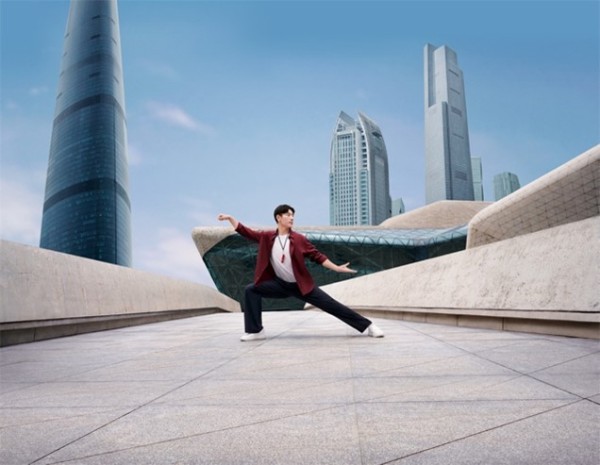
Video resource from Douyin@Tai Chi linger
In September, Victorinox launched a campaign in China, inspired by the traditional Chinese martial art of Tai Chi, and initiated an DOUYIN Tai Chi challenge.
Luxe.CO: How have collaborations with brands like Off-WhiteTM and Adidas helped Victorinox’s brand communication?
Veronika Elsener: The mentioned collaborations have helped us either tap into new target consumers by creating resonance and relevance or getting those who knew of us and the Swiss Army Knife™ to see us in a new light, sparking new interest. Collaborations allow us to share our values and what we stand for in a new and exciting way. This allows for stronger story telling in our marketing communications especially around the topics of design and innovation without compromising on functionality and quality.
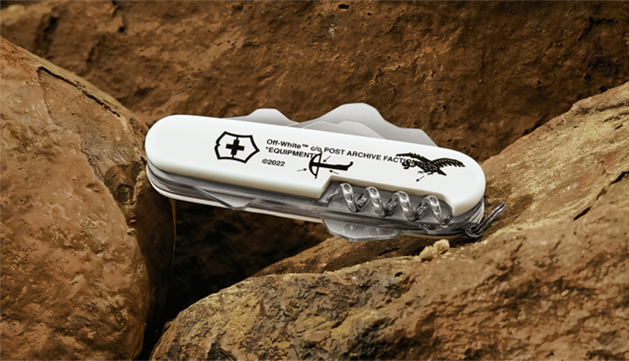
In November 2022, Victorinox collaborated with American designer brand Off-WhiteTM to release the Off-WhiteTM c/o Victorinox Limited Edition Swiss Army Knife.
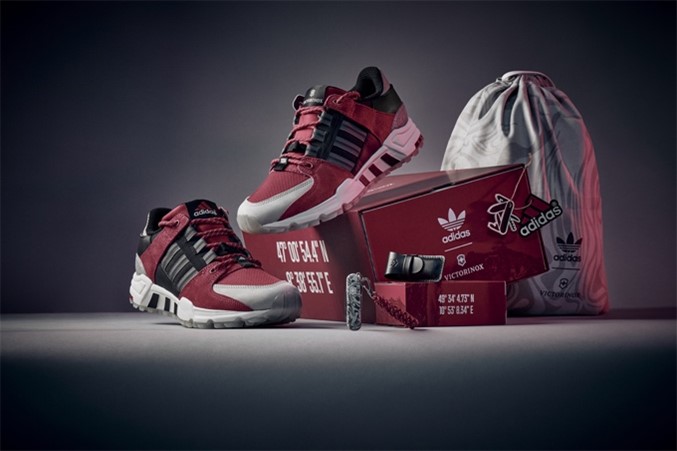
In July 2022, Victorinox and German sports giant Adidas released the sneaker EQT 93 Victorinox and the matching Victorinox pocket knife Classic SD Solemate Limited Edition.
| Image Credit: Victorinox
丨Reporter:Zuo Xiaoli
| Editor: Zhu Ruoyu



